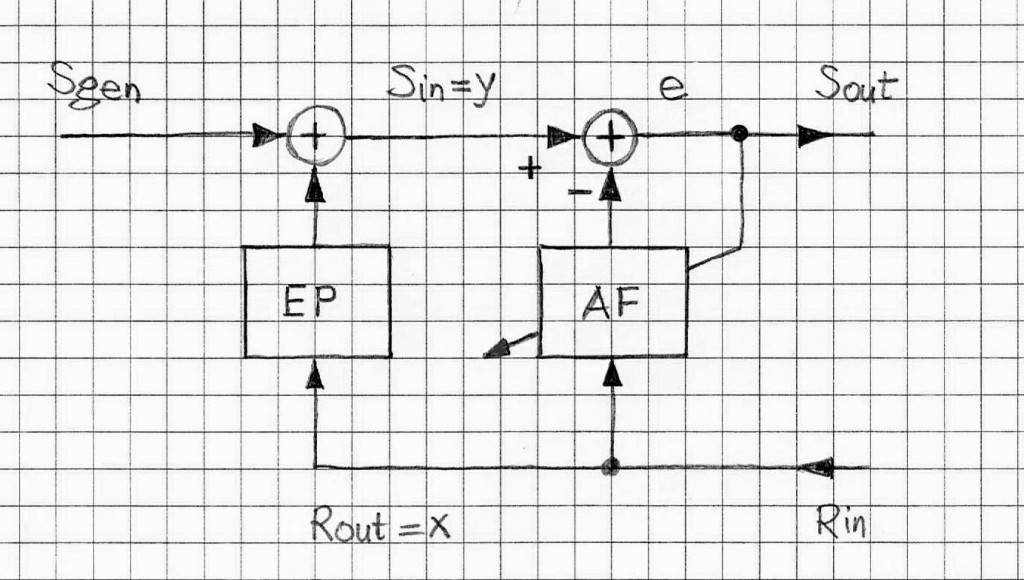Echo cancellation solutions are often equipped with miscellaneous additional functions that are designed and implemented for the purpose of system/network characterization and debugging and for providing characteristic parameters of signals in real time.

One of the characteristic parameters of the echo cancellation solution is the ERL value of the echo path. The short-term average of the ERL can be implemented by computing short-term estimates of the Rout and Sin signals (see Figure 1).
These estimates can be generated using short term energy (or absolute values) of x=Rout and y=Sin during single-talk mode. Equations 1 and 2 illustrate one of the methods based on in the 1st order exponential low-pass (35ms) IIR filter applied to instantaneous energies of x and y (cf. [1]).
en_x(n) = en_x(n-1) . (1-a) + a.x2(n) (1)
en_y(n) = en_y(n-1) . (1-a) + a.y2(n) (2)
where a is a small integration parameter corresponding to the 35 ms exponential filter (an analog equivalent is characterized by the time constant t ( t = RC = 35 ms )).
To estimate short-term ERL values, one can apply the estimated short-term energies, as per Eqs. 1 and 2, to the formula for ERLST as follows:
ERLST(n) = 10.log(en_x(n) / en_y(n)) (3)
Although some of the echo cancellation solutions are equipped with ERLST estimators functioning based on the outline just presented, these computations are in fact redundant. Although they are still valid and there is a value of implementing these computations for double-checking purposes, the ERLST estimations can be generated directly from the AF taps. Since the FIR AF, if converged, is a replica of the echo path IR, then the ERLST can be estimated as
where {h(n), n=0,1,…,N-1} are FIR coefficients of the adaptive filter AF.
It is prudent to issue a disclaimer regarding the accuracy of the method of estimating ERLST based on the FIR AF coefficients: often these coefficients fluctuate due to double-talk conditions and/or changes to the echo path (cf. [2]). Therefore, the accuracy of estimating ERLST based of these coefficients is as good as the accuracy of the coefficients themselves.
VOCAL’s implementation of the echo cancellation designs incorporates standard maintenance and debugging functions and features. If additional functions, such as these described in this note, are required, they can be added as a custom offering. Contact us to discuss your requirements with our engineering staff.
More Information
References
- ITU-T G.168-2012 Digital network echo cancellers (Sub-section 6.4.1.2.1); version 02/2012.
- ECHO PATH DELAY IDENTIFICATION OFF-LINE